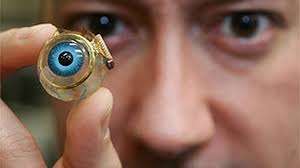
Breaking News
 Mamdani's NYC Tenant Czar Called To 'Seize Private Property,' Calls Home Ownership
Mamdani's NYC Tenant Czar Called To 'Seize Private Property,' Calls Home Ownership
 Trump basks in the glory of his Venezuela raid - but now his allies are reviving a question they...
Trump basks in the glory of his Venezuela raid - but now his allies are reviving a question they...
 Cummings: Deep State Will 'Smash The Absolute Living Sh*t Out of Farage'...
Cummings: Deep State Will 'Smash The Absolute Living Sh*t Out of Farage'...
 Musk & Trump Grab Dinner After Maduro Arrest
Musk & Trump Grab Dinner After Maduro Arrest
Top Tech News
 Laser weapons go mobile on US Army small vehicles
Laser weapons go mobile on US Army small vehicles
 EngineAI T800: Born to Disrupt! #EngineAI #robotics #newtechnology #newproduct
EngineAI T800: Born to Disrupt! #EngineAI #robotics #newtechnology #newproduct
 This Silicon Anode Breakthrough Could Mark A Turning Point For EV Batteries [Update]
This Silicon Anode Breakthrough Could Mark A Turning Point For EV Batteries [Update]
 Travel gadget promises to dry and iron your clothes – totally hands-free
Travel gadget promises to dry and iron your clothes – totally hands-free
 Perfect Aircrete, Kitchen Ingredients.
Perfect Aircrete, Kitchen Ingredients.
 Futuristic pixel-raising display lets you feel what's onscreen
Futuristic pixel-raising display lets you feel what's onscreen
 Cutting-Edge Facility Generates Pure Water and Hydrogen Fuel from Seawater for Mere Pennies
Cutting-Edge Facility Generates Pure Water and Hydrogen Fuel from Seawater for Mere Pennies
 This tiny dev board is packed with features for ambitious makers
This tiny dev board is packed with features for ambitious makers
 Scientists Discover Gel to Regrow Tooth Enamel
Scientists Discover Gel to Regrow Tooth Enamel
 Vitamin C and Dandelion Root Killing Cancer Cells -- as Former CDC Director Calls for COVID-19...
Vitamin C and Dandelion Root Killing Cancer Cells -- as Former CDC Director Calls for COVID-19...
Doctors Are Preparing to Implant the World's First Human Bionic Eye

The team is now preparing for what they claim will be the world's first human clinical trials of a bionic eye — and are asking for additional funding to eventually manufacture it on a global scale.
It's essentially the guts of a smartphone combined with brain-implanted micro electrodes, as TechCrunch reports. The "Gennaris bionic vision system," a project that's more than ten years in the making, bypasses damaged optic nerves to allow signals to be transmitted from the retina to the vision center of the brain.
The system is made up of a custom-designed headgear, which includes a camera and a wireless transmitter. A processor unit takes care of data crunching, while a set of tiles implanted inside the brain deliver the signals.
"Our design creates a visual pattern from combinations of up to 172 spots of light (phosphenes) which provides information for the individual to navigate indoor and outdoor environments, and recognize the presence of people and objects around them," Arthur Lowery, professor at Monash University's Department of Electrical and Computer Systems Engineering, said in a statement.
The researchers are also hoping to adapt the system to help those with untreatable neurological conditions, such as limb paralysis, to regain movement.
"If successful, the MVG [Monash Vision Group] team will look to create a new commercial enterprise focused on providing vision to people with untreatable blindness and movement to the arms of people paralyzed by quadriplegia, transforming their health care," Lewis said.



